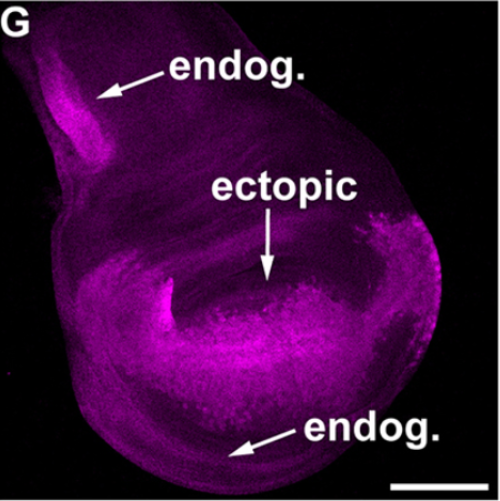Control of Hox transcription factor concentration and cell-to-cell variability by an auto-regulatory switch.
The variability in transcription factor concentration among cells is an important developmental determinant, yet how variability is controlled remains poorly understood. Studies of variability have focused predominantly on monitoring mRNA production noise. Little information exists about transcription factor protein variability, as this requires the use of quantitative methods with single-molecule sensitivity. Using Fluorescence Correlation Spectroscopy (FCS), we have characterized the concentration and variability of 14 endogenously tagged TFs in live Drosophila imaginal discs. For the Hox TF Antennapedia, we investigated whether protein variability results from random stochastic events or is developmentally regulated. We found that Antennapedia transitioned from low concentration/high variability early, to high concentration/low variability later, in development. FCS and temporally resolved genetic studies uncovered that Antennapedia itself is necessary and sufficient to drive a developmental regulatory switch from auto-activation to auto-repression, thereby reducing variability. This switch is controlled by progressive changes in relative concentrations of preferentially activating and repressing Antennapedia isoforms, which bind chromatin with different affinities. Mathematical modeling demonstrated that the experimentally supported auto-regulatory circuit can explain the increase of Antennapedia concentration and suppression of variability over time.

- Development. 2019 Jan 25;146(12)
- 2019
- Biophysics
- 30642837
- PubMed
Enabled by:
